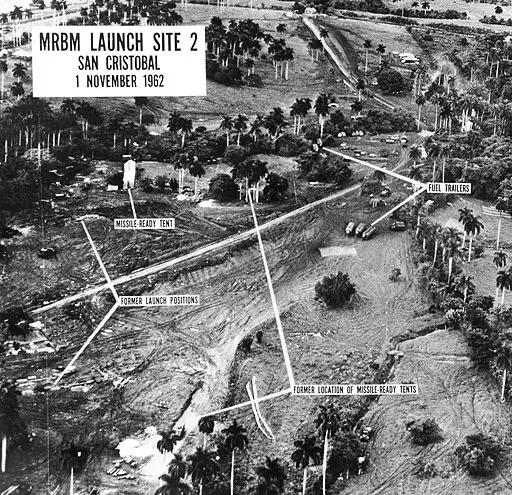Brinkmanship involves pushing a situation to the brink of war, while containment aims to prevent the spread of communism without direct military confrontation.
Did you know that during the Cold War, two distinct foreign policy strategies emerged, each with its own goals and methods? Brinkmanship and containment are two approaches that shaped international relations during this period, with implications that continue to resonate today. Let’s explore the differences between these strategies and gain insight into their impact on global diplomacy.
Key Takeaways:
- Brinkmanship and containment are two foreign policy strategies employed during the Cold War.
- Brinkmanship involves intentionally escalating threats to gain negotiation advantages, while containment aims to prevent the spread of communism through various means.
- Brinkmanship is characterized by aggressive risk-taking, while containment relies on military, economic, and diplomatic measures.
- Both strategies had significant effects on international relations and played a role in shaping the Cold War era.
- Understanding the differences between brinkmanship and containment provides valuable insights into the complexities of foreign policy.
Definition of Brinkmanship
Brinkmanship is a bold foreign policy tactic where threats and risks are purposely increased to the edge of catastrophe to gain negotiation advantages. Instead of direct warfare, it pressures opponents to concede. Coined by U.S. Secretary of State John Foster Dulles in 1956, it gained traction during the Cold War between the U.S. and the Soviet Union.
This approach relies on aggressive risk-taking to secure desired outcomes, believing that by pushing boundaries, concessions can be won. It contrasts with peaceful resolutions, aiming to exploit the brink – just before disaster – for negotiation leverage. Despite its dangers, brinkmanship was a hallmark of Cold War diplomacy, most notably seen in the Cuban Missile Crisis, where the world teetered on the brink of nuclear conflict, revealing the high stakes and intricate dynamics of global diplomacy.
Origins of Brinkmanship
Brinkmanship, a term coined by John Foster Dulles, describes a tactic of escalating threats to prevent conflict, especially with the Soviet Union during the Cold War. Dulles believed that this brink of war was crucial for diplomacy. This strategy became prominent due to the threat of nuclear weapons, raising the stakes of international disputes significantly.
Amid the Cold War tensions, brinkmanship was a way for the U.S. to assert its power and negotiate from a position of strength. With nuclear weapons in play, any misstep could lead to disaster, making brinkmanship a risky but essential tool in international relations. Although Dulles popularized the term, many nations adopted similar tactics during this tense period in history.
| Key Points | Details |
|---|---|
| Origin of the term | The term “brinkmanship” was coined by John Foster Dulles in 1956 to describe his policy of escalating threats. |
| Role during the Cold War | Brinkmanship became a key component of U.S. foreign policy during the Cold War, with nuclear weapons intensifying its potential consequences. |
| Rationale behind brinkmanship | Advocates of brinkmanship argued that it was necessary to escalate tensions to prevent war and gain negotiation advantages. |
| Broader application | Although associated with Dulles, brinkmanship was employed by various governments as a response to the geopolitical dynamics of the Cold War. |
The Cuban Missile Crisis as a Case of Brinkmanship

The Cuban Missile Crisis in 1962 was a major showdown between the United States and the Soviet Union. The Soviets placing nuclear missiles in Cuba threatened the U.S. directly. Both sides engaged in brinkmanship, risking nuclear war. The U.S. responded with a naval blockade around Cuba to stop further escalation.
Tensions soared, and the world feared a nuclear catastrophe. However, intense negotiations led to a resolution. The Soviets agreed to remove their missiles from Cuba, averting disaster. This crisis showed how brinkmanship could lead to dangerous situations and the importance of careful diplomacy in avoiding catastrophe.
| Key Elements of the Cuban Missile Crisis | Impact |
|---|---|
| Soviet Union’s deployment of nuclear missiles in Cuba | Direct threat to the United States |
| U.S. naval quarantine around Cuba | Attempt to prevent further escalation |
| Negotiations and diplomacy | Resolution of the crisis and withdrawal of Soviet missiles |
| Tensions and risk of nuclear war | Demonstration of the dangers of brinkmanship |
The Cuban Missile Crisis remains a pivotal moment in history, emphasizing the need for diplomatic solutions and the dangers inherent in brinkmanship. The crisis serves as a stark reminder of the potential consequences that can arise when nations push their interactions to the precipice of war.
Definition of Containment
Containment is a foreign policy strategy aimed at stopping the spread of communism. It involves using military, economic, and diplomatic means to prevent the expansion of communist influence in other countries. The goal of containment is to contain communism within its existing borders rather than directly confronting it. The strategy was prominent during the Cold War and influenced U.S. interventions in various countries.
| Components of Containment | Examples |
|---|---|
| Military | The deployment of troops and resources to areas threatened by communist expansion, such as the Korean War. |
| Economic | The implementation of economic aid programs, trade agreements, and sanctions to support non-communist nations and deter communist influence. |
| Diplomatic | Negotiations, alliances, and diplomatic efforts to isolate and counter communist regimes, such as the formation of NATO. |
Similarities between Brinkmanship and Containment
While brinkmanship and containment are different strategies, they share some notable similarities that emerged during the Cold War. Both approaches were responses to the threat of communism and involved interactions between the United States and the Soviet Union. Although their goals and methods differed, both strategies could lead to potentially dangerous situations and relied on assertive actions to achieve their objectives.
Here are the key similarities between brinkmanship and containment:
- Response to the Cold War: Brinkmanship and containment were both developed as responses to the Cold War, a period of intense political and military tension between the United States and the Soviet Union. The threat of communism and the desire to curtail its influence prompted the development of these strategies.
- Interactions between the United States and the Soviet Union: Both strategies involved direct interactions and confrontations between the United States and the Soviet Union. Brinkmanship sought negotiation advantages through aggressive tactics, while containment aimed to limit the spread of communism through various means, including military actions.
- Potentially dangerous situations: Both strategies carried inherent risks and could potentially escalate into conflict. Brinkmanship intentionally pushed situations to the brink of disaster, aiming to force opponents to back down, while containment required the use of military force and diplomatic pressure to contain communist expansion.
- Assertive actions: Both strategies relied on assertive actions to achieve their objectives. Brinkmanship involved deliberate escalation of threats and risks, while containment employed military deployments, economic aid, and diplomatic negotiations to restrict communist influence.
By understanding the similarities between brinkmanship and containment, we gain valuable insights into the complexities of the Cold War and the challenges faced by policymakers in dealing with the threat of communism. Although these strategies had different outcomes and implications, they were important components of U.S. foreign policy during this transformative period in history.
Differences between Brinkmanship and Containment
Despite their similarities, there are fundamental differences between brinkmanship and containment in terms of goals, methods, and approaches. These differences shape their overall strategies and outcomes in dealing with the threat of communism during the Cold War.
Brinkmanship
Brinkmanship is a more aggressive and risky approach to international relations. It involves deliberately escalating threats and risks in order to gain negotiation advantages. This strategy relies on confrontational tactics to push the opponent to back down rather than engage in actual warfare. Brinkmanship is characterized by assertiveness and a willingness to take calculated risks.
Containment
On the other hand, containment is a strategy aimed at limiting the spread of communism through various means, without resorting to direct confrontation. It involves a combination of military, economic, and diplomatic measures to prevent the expansion of communist influence. Containment focuses on containing communism within its existing borders, rather than seeking negotiation advantages through confrontational tactics.
To provide a clearer understanding of the differences between brinkmanship and containment, the following table illustrates the contrasting aspects of these strategies:
| Brinkmanship | Containment | |
|---|---|---|
| Approach | Risk-taking and escalation of threats | Military, economic, and diplomatic means |
| Objective | Obtaining negotiation advantages | Limiting the spread of communism |
| Confrontation | Intentional and potentially volatile | Avoided, prioritize indirect measurements |
| Risk Level | High risk, potential for conflict | Calculated risk, aim to prevent conflict |
As seen in the table, brinkmanship and containment differ significantly in their approach, objectives, and risk levels. While brinkmanship relies on aggressive tactics and deliberate escalation, containment focuses on a more calculated and comprehensive approach to limit the expansion of communism. Understanding these differences provides insight into the complexities of foreign policy during the Cold War and highlights the challenges faced in dealing with the threat of communism.
Effects of Brinkmanship during the Cold War
Brinkmanship during the Cold War increased tensions between the U.S. and the Soviet Union, leading to a dangerous game of threats, especially involving nuclear weapons. This aggressive approach made the global atmosphere volatile and uncertain.
The consequences of brinkmanship were significant, as seen in events like the Cuban Missile Crisis, where the world faced the brink of nuclear war. Beyond individual crises, brinkmanship strained trust between nations and fueled an arms race, heightening the risk of a catastrophic conflict and dividing the world into wary factions.
The Cuban Missile Crisis: A Case Study
The Cuban Missile Crisis is a vivid example of brinkmanship’s dangers. In 1962, the Soviet Union stationed nuclear missiles in Cuba, near the U.S., sparking a tense standoff. To stop further missile shipments, the U.S. set up a naval blockade around Cuba.
This crisis brought the world to the brink of nuclear war. For thirteen tense days, global tension was high. Fortunately, through intense diplomacy, a peaceful solution emerged: the Soviets removed their missiles, and the U.S. promised not to invade Cuba. This event underscored the grave risks of brinkmanship and left a lasting impact on global politics, serving as a warning for future leaders.
Effects of Containment during the Cold War
Containment was a key strategy employed by the United States during the Cold War. It aimed to prevent the spread of communism and led to U.S. involvement in various conflicts, such as the Korean War and the Vietnam War. The effects of containment were significant and varied.
Prevention of Communist Expansion in Certain Regions
One of the primary effects of containment was the successful prevention of further communist expansion in certain regions. Through military alliances, economic aid, and diplomatic efforts, the United States was able to contain the spread of communism in Western Europe, particularly through initiatives such as the Marshall Plan. By providing economic assistance and fostering stability, the U.S. effectively limited the influence of communism in this region.
Costly and Deadly Conflicts in Other Areas
While containment achieved success in certain regions, it also resulted in costly and deadly conflicts in other areas. The Korean War and the Vietnam War, both fought as part of containment efforts, resulted in significant loss of life and resources. These conflicts demonstrated the challenges and complexities of implementing a containment strategy, as they involved military engagements and prolonged conflicts that stretched the limits of U.S. capabilities.
| Effects of Containment during the Cold War | Regions | Results |
|---|---|---|
| Successful prevention of communist expansion | Western Europe | Containment limited the spread of communism in Western Europe through economic aid and military alliances. |
| Costly and deadly conflicts | Korea, Vietnam | The Korean War and the Vietnam War, fought as part of containment efforts, resulted in significant loss of life and resources. |
The effects of containment during the Cold War highlight the mixed results and complexities of implementing this strategy. While successful in preventing further communist expansion in certain regions, containment also led to significant conflicts that came with considerable human and financial costs.
Conclusion
Brinkmanship and containment were two major foreign policies during the Cold War. Brinkmanship used aggressive tactics and threats to gain negotiation advantages, while containment aimed to stop communism’s spread through various means.
Their main differences lie in their goals and methods. Brinkmanship sought negotiation edges by risking conflict, while containment aimed to halt communism without direct battles. These strategies shaped Cold War diplomacy, highlighting the era’s challenges and complexities.
FAQ
What is the difference between brinkmanship and containment?
Brinkmanship is a foreign policy strategy that involves escalating threats and risks to gain negotiation advantages, while containment is a strategy aimed at stopping the spread of communism through various means without direct confrontation.
What is the definition of brinkmanship?
Brinkmanship is the intentional escalation of threats and risks to the point of potential disaster in order to gain an advantageous position in negotiations.
What are the origins of brinkmanship?
Brinkmanship was coined in 1956 by U.S. Secretary of State John Foster Dulles and gained prominence during the Cold War.
How was brinkmanship involved in the Cuban Missile Crisis?
The Cuban Missile Crisis exemplifies brinkmanship, as both the U.S. and the Soviet Union engaged in a high-stakes game of escalation, which eventually led to the withdrawal of Soviet missiles from Cuba.
What is the definition of containment?
Containment is a foreign policy strategy aimed at limiting the spread of communism through military, economic, and diplomatic means without direct confrontation.
What are the similarities between brinkmanship and containment?
Both strategies were responses to the Cold War, aimed at dealing with the threat of communism, involved interactions between the United States and the Soviet Union, and relied on assertive actions to achieve their objectives.
What are the differences between brinkmanship and containment?
Brinkmanship is a more aggressive and risky approach, involving deliberate escalation of threats, while containment focuses on limiting the spread of communism through various means without direct confrontation.
What were the effects of brinkmanship during the Cold War?
Brinkmanship heightened tensions between the U.S. and the Soviet Union, created a volatile global environment, and increased the risk of potential conflict, as demonstrated by the Cuban Missile Crisis.
What were the effects of containment during the Cold War?
Containment led to U.S. involvement in conflicts such as the Korean War and the Vietnam War, with mixed effects in preventing communist expansion and causing costly and deadly conflicts.
Source Links
- https://en.wikipedia.org/wiki/Brinkmanship
- https://www.britannica.com/topic/brinkmanship
- https://www.123helpme.com/essay/Containment-Brinkmanship-and-the-Domino-Theory-240261
Image Credits
Featured Image By – U.S. Navy, Public domain, via Wikimedia Commons
Image 1 By – see above, Public domain, via Wikimedia Commons









